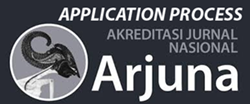Tinjauan Hukum terhadap Dampak Kecanduan TikTok terhadap Kesehatan Mental Remaja: Studi Kasus di Kalangan Pelajar
DOI:
https://doi.org/10.59653/jimat.v3i01.1329Keywords:
TikTok, addiction, mental health, , teenagers, legal protectionAbstract
This research aims to analyze the impact of TikTok addiction on the mental health of teenagers, especially among students, as well as reviewing laws related to protecting their mental health. TikTok, as a social media platform that is very popular among teenagers, has the potential to influence users' psychological conditions, both positively and negatively. Addiction to these platforms can cause mental disorders such as anxiety, depression, stress, and sleep disorders. In addition, excessive TikTok users can affect teenagers' social interactions and cognitive development. This research also examines how the legal system in Indonesia, including regulations regarding the protection of children and adolescents, seeks to provide protection against the negative impacts of social media use, as well as limitations in dealing with the phenomenon of TikTok addiction. The results of this research show that even though there are regulations governing the protection of children in cyberspace, more comprehensive policies are still needed regarding monitoring the use of social media, education regarding its negative impacts, and protecting the mental health of teenagers. This research suggests the need for collaboration between the government, educational institutions, and families to create policies that can reduce the negative impact of social media on adolescent mental health.
Downloads
References
Dewi Nurkamila. (2024a). Upaya Guru Pendidikan Agama Islam dalam Mengatasi Kecanduan Scrolling Tiktok pada Siswa SMK Kamandaka Bogor. Inspiratif Pendidikan, 13(1). https://doi.org/10.24252/ip.v13i1.48572
Dewi Nurkamila. (2024b). Upaya Guru Pendidikan Agama Islam dalam Mengatasi Kecanduan Scrolling Tiktok pada Siswa SMK Kamandaka Bogor. Inspiratif Pendidikan, 13(1). https://doi.org/10.24252/ip.v13i1.48572
Dm, M., & Mardiana, N. (2024). HUBUNGAN PENGGUNAAN MEDIA SOSIAL TIKTOK TERHADAP KESEHATAN MENTAL REMAJA. 6(1).
Eviani Masruroh, Miftakhul Jannah, & Yes Matheos Lasarus Malaikosa. (2024). Efektivitas Kebijakan Perlindungan Anak di Era Digital. Jurnal Ilmu Sosial dan Humaniora, 2(1), 28–33. https://doi.org/10.58540/isihumor.v2i1.577
Fangohoi, H. (n.d.). SOSIALISASI DAMPAK NEGATIF PENGGUNAAN GADGED (HANDPHONE) PADA REMAJA DI DESA RUMAH TIGA.
Khoerunnisa, N. (n.d.). HUBUNGAN PENGGUNAAN MEDIA SOSIAL TIKTOK DENGAN KESEHATAN MENTAL REMAJA.
Mindyasningrum, M. (2023). Bentuk Perlindungan Hukum Anak terhadap Konten Berbahaya di Media Sosial. WASPADA (Jurnal Wawasan Pengembangan Pendidikan), 11(2), 27. https://doi.org/10.61689/waspada.v11i2.468
Mona, L. S., & Irman, I. (2024a). EFEK KECANDUAN MEDIA TIK TOK TERHADAP PERILAKU SOSIAL REMAJA. Jurnal Mahasiswa BK An-Nur : Berbeda, Bermakna, Mulia, 10(1), 127. https://doi.org/10.31602/jmbkan.v10i1.13086
Mona, L. S., & Irman, I. (2024b). EFEK KECANDUAN MEDIA TIK TOK TERHADAP PERILAKU SOSIAL REMAJA. Jurnal Mahasiswa BK An-Nur : Berbeda, Bermakna, Mulia, 10(1), 127. https://doi.org/10.31602/jmbkan.v10i1.13086
Nayla, M. R. (2024). Memahami Dampak Media Sosial terhadap Kesehatan Mental Mahasiswa. 2(1).
Nur, A., & Wijanarko, D. (2024). ANALISIS HUBUNGAN ANTARA KESEHATAN MENTAL DAN PENGGUNAAN GADGET DI KALANGAN REMAJA.
Prakoso, G. B., Maharani, C. T. S., Dewi, K. M., Putra, S., Wardani, N. T. K., Riyadin, S. A., Paulus, F., Karimah, L. S., Kusuma, A., & Wahyuningtyas, A. E. (2024). EDUKASI KEBIJAKAN PENGGUNAAN SOSIAL MEDIA BERDASARKAN UU ITE : UPAYA ANTI HOAKS DAN PENCEGAHAN PENIPUAN PADA SISWA SMP N 1 BULU. 4.
Purwandini, A. P., Syafitri, E. N., Widayati, R. W., & Wiyani, C. (n.d.). KECANDUAN PENGGUNAAN MEDIA SOSIAL TIK TOK DENGAN TINGKAT STRESS PADA SISWA SMA KELAS X DI SMA KOLOMBO SLEMAN YOGYAKARTA.
Rahmadani, A., Paramita, M. L., & Haura, S. (n.d.). Regulasi Digital dan Implikasinya Terhadap Kebebasan Berpendapat Pada Undang- Undang ITE Pada Platform Media Sosial di Indonesia.
Ramadhani, N., Adilah, P., Oktora, M. Z., & Anggraini, D. (2024). SYSTEMATIC LITERATURE REVIEW: HUBUNGAN MEDIA SOSIAL TERHADAP KESEHATAN MENTAL REMAJA. 1(3).
Ramdani, N. S., Nugraha, H., & Hadiapurwa, A. (2021). POTENSI PEMANFAATAN MEDIA SOSIAL TIKTOK SEBAGAI MEDIA PEMBELAJARAN DALAM PEMBELAJARAN DARING. Akademika, 10(02), 425–436. https://doi.org/10.34005/akademika.v10i02.1406
Redaksi, A. (2021). Mudofir (UIN Raden Mas Said Surakarta) Syamsul Bakri (UIN Raden Mas Said Surakarta) Ahmad Saifuddin (UIN Raden Mas Said Surakarta). 5(2).
Sachiyati, M., Yanuar, D., & Nisa, U. (2023). FENOMENA KECANDUAN MEDIA SOSIAL (FOMO) PADA REMAJA KOTA BANDA ACEH. 8.
Tubagus, A. L. P. (2024). Perlindungan Hukum terhadap Remaja berkaitan dengan Penanganan Kesehatan Mental. 04(01).
Yonas, C. T., Fajar, M. A., Aldiyanto, M., Kholid, M. I., Priyanti, P. W., Soleha, S., & Fitri, S. R. (2024). Literasi Digital Pada Anak Usia Dini Untuk Menghadapi Era Digital Di SDN Kemuning Lor 0. Jurnal Manajemen, 2(04).
Downloads
Published
How to Cite
Issue
Section
Categories
License
Copyright (c) 2025 Ihda Shofiyatun Nisa’, Lailatun Ni’mah, Ainin Ainiyya Nurroiffah

This work is licensed under a Creative Commons Attribution-ShareAlike 4.0 International License.
Authors who publish with this journal agree to the following terms:
- Authors retain copyright and grant the journal right of first publication with the work simultaneously licensed under a Creative Commons Attribution-ShareAlike that allows others to share the work with an acknowledgement of the work's authorship and initial publication in this journal.
- Authors are able to enter into separate, additional contractual arrangements for the non-exclusive distribution of the journal's published version of the work (e.g., post it to an institutional repository or publish it in a book), with an acknowledgement of its initial publication in this journal.
- Authors are permitted and encouraged to post their work online (e.g., in institutional repositories or on their website) prior to and during the submission process, as it can lead to productive exchanges, as well as earlier and greater citation of published work (See The Effect of Open Access).























